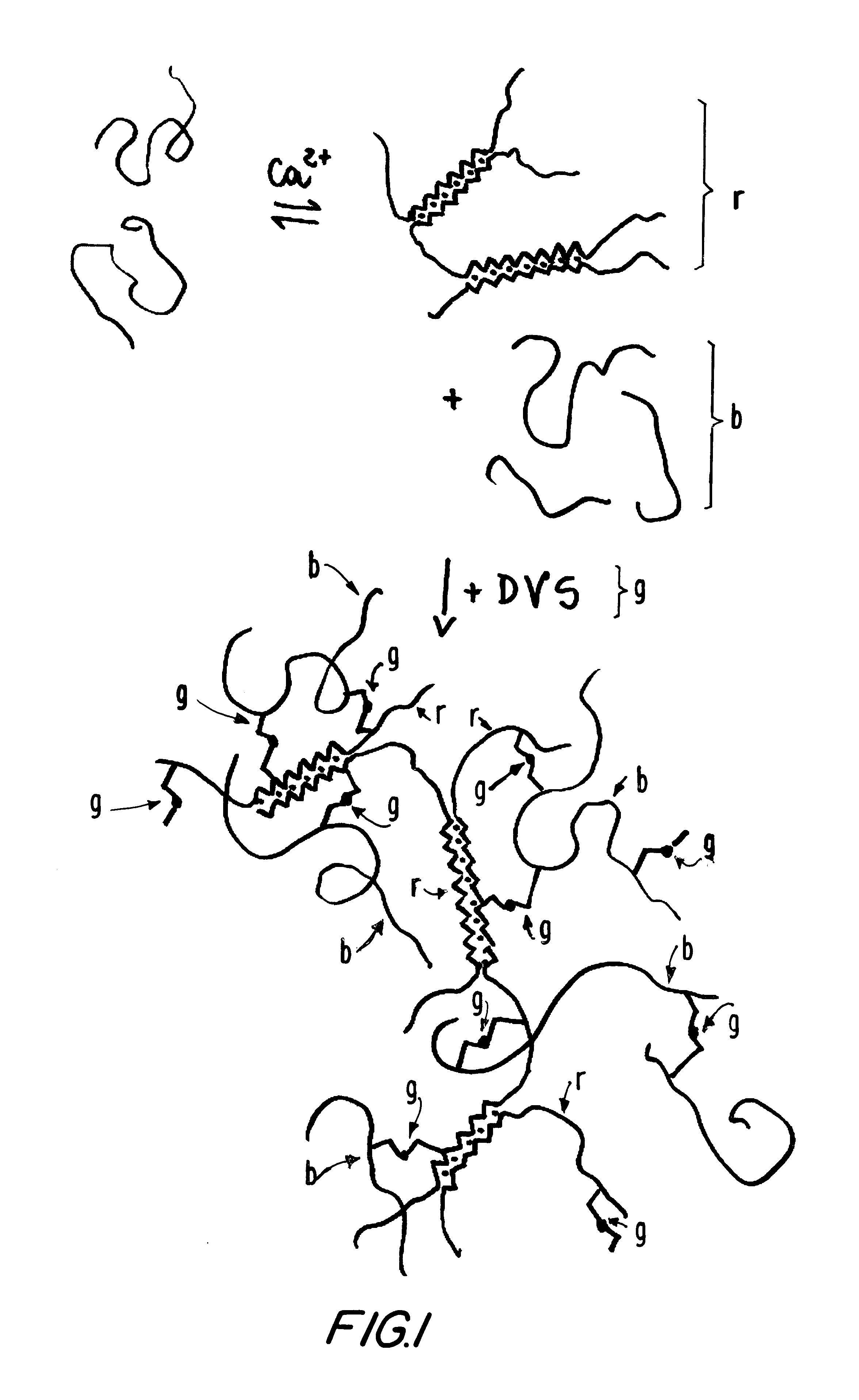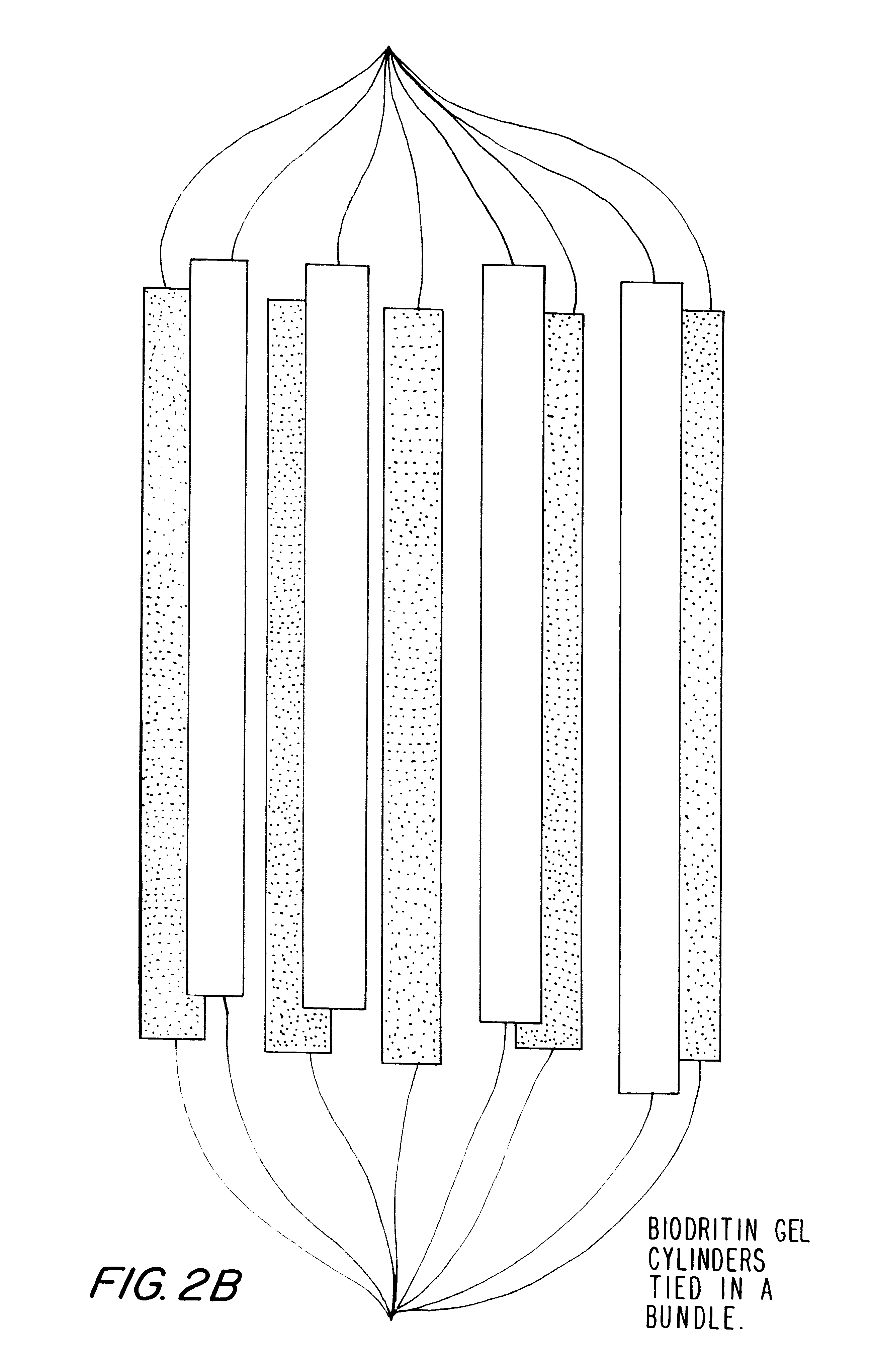Hetero-polysaccharide conjugate and methods of making and using the same
a polysaccharide and conjugate technology, applied in the field of heteropolysaccharide conjugate, to achieve the effect of convenient handling
- Summary
- Abstract
- Description
- Claims
- Application Information
AI Technical Summary
Benefits of technology
Problems solved by technology
Method used
Image
Examples
example 1-- preparation
Example 1--Preparation of the reactant solutions
Chondroitin sulfate: the commercial CIS used contains 70% of 4-sulfate and 30% of 6-sulfate; 2.5 g was allowed to dissolve in 25 ml 0.1 M sodium carbonate solution, to give a 100 mg / ml final concentration. In other formulations, higher concentrations of CIS are used, to give final concentrations of 150, 200 or 250 mg / ml.
Sodium alginate (5.0 g) was suspended in 45 ml of water, heated to 40.degree. C., after which another 30 ml water were added in 10 ml portions to facilitate dissolution and decrease viscosity of the final solution. The amount of sodium alginate used corresponds to 28.3 mmoles of the unit disaccharide residue of alginate (F.Wt.=176.2).
example 2--
Partial protection of calcium binding sites
The total blockage of the calcium sites in the alginate solution would require 6.5 ml of a 4.5 M CaCl.sub.2 solution, which is not practical to use. A 4.5 M calcium chloride stock solution was diluted 1:5 and 200 .mu.l portions were added at intervals to the sodium alginate solution. During additions, and thereafter, the solution was vigorously mixed with the aid of a power mixer to completely avoid formation of gel clumps. Eight such additions, plus one, were made, in a total of 1800 .mu.l, corresponding to 1.5 mmol of calcium ions added.
Biodritin preparations can also be made in which the calcium binding sites are blocked to a lesser extent, from 25% to 75% of that described above. This also results in soluble materials, provided the coupling with DVS is not extensive.
In applications where the s-IPN gel is prepared, protection of the calcium binding sites is not necessary, as there is no chemical reaction with the alginate component of Bi...
example 4-- processing
Example 4--Processing and Initial Purification
After reaction is complete, the mixture resembled a mousse. To each 100 ml portion of this material was added 15 ml of 1M NaCl and 5.times.1 ml portions of a 0.63 M EDTA solution, to remove calcium ions from the "egg-box" sites. Mixing was maintained to facilitate solubilization. A very viscous and brownish solution was finally obtained.
The solution was cooled in an ice-water bath, after which 3.times.100 ml portions of ice-cold ethanol were slowly added with strong mixing with spatula, to precipitate the product. A white, thread-like, copious precipitate formed; the mixture was left for one hour in the ice-water bath, after which it was centrifuged at 4.degree. C., at 6000 rpm for a minimum of 20 minutes, in 250 ml plastic bottles.
PUM
| Property | Measurement | Unit |
|---|---|---|
| Composition | aaaaa | aaaaa |
| Concentration | aaaaa | aaaaa |
| Structure | aaaaa | aaaaa |
Abstract
Description
Claims
Application Information
 Login to View More
Login to View More - R&D
- Intellectual Property
- Life Sciences
- Materials
- Tech Scout
- Unparalleled Data Quality
- Higher Quality Content
- 60% Fewer Hallucinations
Browse by: Latest US Patents, China's latest patents, Technical Efficacy Thesaurus, Application Domain, Technology Topic, Popular Technical Reports.
© 2025 PatSnap. All rights reserved.Legal|Privacy policy|Modern Slavery Act Transparency Statement|Sitemap|About US| Contact US: help@patsnap.com



